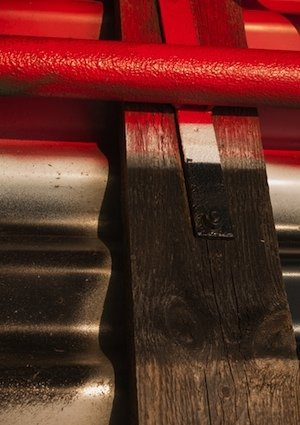We may earn revenue from the products available on this page and participate in affiliate programs. Learn More ›
A fresh coat of paint can brighten the look and prolong the life of metal surfaces in and around your home. Painting metal is no more or less difficult than painting other surfaces. And, as with other paint jobs, whether you’re painting a vintage desk or an aging fence in the yard, your success will largely depend on how much effort you put into the prep work. Sorry, no shortcuts. But here’s the good news: Follow the steps below, and the paint job can be expected to last and look great for years.
Tools & Materials
Bobvila.com may earn a commission from purchases made through these links.
Step 1
Start by inspecting the metal surface you intend to paint. Assuming that it’s portable, move the item to a well-ventilated space where you have prepared a drop cloth-covered work area. Inspect the metal for cracks and peeling or chipped paint. You will probably find no shortage of surface imperfections, but don’t worry—these can be removed by means of a wire brush (if the rust doesn’t budge, consult these instructions). To be on the safe side, wear a dust mask as you work.

Step 2
Having removed all rust and old paint—or as much as it was humanly possible to remove—proceed to sanding the metal. Use either a sanding block or a square of fine-grit sandpaper. (Here, too, it’s wise to wear not only a dust mask, but also protective glasses.) After sanding the metal, wipe it down with a moistened cotton cloth, using it to clean all the sanding dust off the surface. Before continuing onto the next step, wait for the metal to dry out completely.
Step 3
Apply a specially formulated metal primer (view example on Amazon). If the object you are painting doesn’t have a smooth surface—if it features lots of nooks, crannies, and crevices—opt for spray primer. Otherwise, use a brush or roller to apply traditional primer, choosing one or the other tool based on the surface area. Check the instructions on the product you’ve chosen, but generally speaking, primer needs about 24 hours to dry.
Step 4
Now it’s finally time for paint. Use a brush or roller, or use a spray paint formulated for application on metal (manufacturers like Rust-Oleum and Krylon offer “all surface” spray paint in numerous colors and sheens). Apply several light coats, letting the paint dry for a few hours between coats. Once you are happy with the coverage, let the paint dry for about eight hours (or overnight). After that, you’re basically all done!
Step 5
Last but not least is the optional step of finishing the paint job with a clear spray lacquer sealer (view example on Amazon). In addition to protecting your paint job, such sealers impart a nice shine.
Now that you know how to paint metal and you’ve witnessed how easy the process can be, you may find yourself studying your home and garden with renewed attention, looking for other things to revitalize with a fresh coat of color. Yes, one successful DIY project inevitably leads to another!


